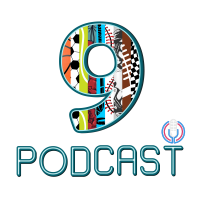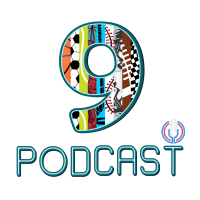What is a villain?
It’s a traditional outlook on an antagonist. The maniacal face of dishonour with their crimson eyes set on targeted wreckage – reasons be damned.
New York is basketball. It is also theatre. Broadway. Showbiz. Madison Square Garden earned its hallowed sobriquet – The Mecca of Basketball – through culture. The bloodline traverses through centuries, carrying the rich heritage of college basketball by the Eighth Avenue between 49th and 50th Street. The success of the CCNY in the 50s allowed the sport to settle into the veins of the city and its citizens. The aura of the Garden hums blue and orange parables. It is heritage, the talk of the town.

Their last championship, however, came 48 years ago. The Ewing era was a sliver of box-office. James Dolan has produced a delectable array of despair and truculence laid out on a lavish table spanning twenty years. A revolving door of front-office members, head coaches, and a pathway not to be travelled by one Spike Lee, all worked in tandem to shepherd the darkest of clouds over the Garden. Ah, to be a Knickerbocker. They will be the first to tell you the winding, mostly rocky roads have been anything but easy to their spine and heart. Success drifted away with each comical mishap along with the ability to conjure up hope at an all time low.

The 2020-21 season felt like an outlier in the saga. The stars felt like they had aligned. Tom Thibodeau arrived with a ghost from the past. Defensive congruence with an unending surge of energy coursing through the team spoke to the history of the franchise, forgotten over years of cruise control towards nowhere. Julius Randle broke through the canvas that painted him as a scorer, not a winner. Unearthing numerous facets to his game, from long-range shooting to playmaking, Randle blossomed at the helm of a thriving Knicks side. RJ Barrett’s evident potential took a tangible shape in his sophomore year, assuming the role of a second option as a two-way player, shooting 40 percent from three and averaging 17.6 a game. Immanuel Quickley floated (-ered?) onto the scene. Derrick Rose sauntered in, fitting snugly into his role. It all seemed to work fluently. Forget expectations, the team surpassed the wildest dreams of those who dared

A romantic journey, the colours of New York had tinted the glasses. A fourth-seed finish brought hope, not of a title perhaps; although stranger things have happened, like the season itself. The team they faced in the first round – the Atlanta Hawks.
“It’s real quiet in here” He said, somehow the loudest voice in the Garden packed with vociferous Knicks supporters. A finger to the lip as jeers rained down. The words were uttered in the most sinister of tones, venom spewed with each inflection. The approach was cold, ice cold even. After a tough floater in the dying seconds of the game to put his team ahead, Trae Young rallied his side to a game 1 victory.

The chants were loud, reciprocating the vitriol of being humiliated. The outcome was warranted. The Hawks had come prepared for the recipient of the Most Improved Player Award. Hunter forced Randle to the help side where Capela stood in wait, rummaging a measly 26.1 percent from the field. Quickley, Burks and Rose hoisted the responsibility in an apparent off-night for their dynamic duo.
The subsequent games dictated a pattern. The Hawks had Randle figured out. All defensive roads led to him. Hell, even with Trae Young guarding him, the plan was always to lure him into Capela on the help rather than him in action, and it worked hook, line and sinker. Rose eventually started games, hampering the crucial second unit. Their frailties in defense showed as Trae Young ran the show unchained. His reading of play sublime, finding Capela and Collins as he created a vortex of unpredictability. Bogdanovic flaunted his shot creation and added to the menu for the Knicks to pick their fate from. Kevin Huerter, Danilo Gallinari, Lou Williams, and Onyeka Okongwu from the bench… Overkill? The derision was incessant, magnified as the blur over the truth slowly dissipated. The Atlanta Hawks were simply, better. Atlanta had embraced their role. Trash talks from, “I’ll see you at the A.” to a shove from Solomon Hill to Nerlens Noel after Trae collided with the Knicks Center. The villains had prevailed.

What is a villain?
Yes, it carries a level of objectivity with it. They are ‘the bad guys’. Yet, perception holds weight. It adds depth to the role, a binary outlook doesn’t cut it. The disdain for Trae finds its roots in his style of play. Narcissistic with a touch of inexperience. Throw in his affinity to hunt for fouls and you have yourself a recipe for scorn.
It goes beyond that. His teammates often found themselves to be spectators. A piece by Chris Kirschner and Sam Amick for the Athletic highlighted the disagreement between John Collins and Trae Young.
“Collins talked about the need to get into offensive sets more quickly and to limit all those early shot-clock attempts that leave his teammates on the outside looking in. He shared his desire to be more involved and expressed a desire for more ball involvement and flow on offense.
There was no back-and-forth between the two, but the pointed criticism caught the attention of the room. And Young, sources say, made it clear to others later that he strongly disagreed with Collins’ assessment.”

Collins’ words ring true. Their approach to the game for the longest time was reactive. The four teammates positioned themselves as they waited for Trae’s dribble to end before they moved. Their star man’s urge to attract all the attention before dishing caused a static offence. For a player of Collins’ ability and situation, the frustration grew. He declined the extension from the Hawks, deciding to bet on himself. Time was of the essence and the team’s play was taking them nowhere fast.
Such are the perils of a young team with new pieces. Their depth had an initial tinge of ‘too many cooks’, yet it turned out to be a necessity as injuries would decimate the side throughout the regular season. Lloyd Pierce struggled to contain the storm and eventually gave way to their current head coach, Nate McMillan.

McMillan was promoted from assistant to head coach with a linear thought process, experience. Three jobs as head coach since 2000 with a track record of steadying the ship had ‘man for the job’ written all over it. A 27-11 record under McMillan in the regular season saw the appointment bear fruit. How, though? A mere promotion to the position of head coach brought consistency, which is exactly what McMillan imbibed within the team. The chaos was noted. Freedom on offence was attained through restriction. Spectators no more, the roles of each player was precisely outlined. Trae was the star. His playmaking skills were accentuated as the camaraderie gradually elevated. Bogdanovic was handed the reigns to create shots. Collins and Capela learned to work symbiotically. The ball was swung faster all while Trae stands as the figurehead. Defensively, DeAndre Hunter felt assured in his role as the rest assumed. Their defensive rating of 102.1 in the first round of the playoffs highlights their intelligence. Kevin Huerter acts as the playmaking bridge coming off the bench. With each move came synergy and understanding. The Hawks felt like well, the Hawks. The side they could be. The inexperience does show at times. The static nature does lead to turnovers; but it’s progress. Questions were asked when Rajon Rondo was traded for Lou Williams and two second-round draft picks considering ‘Playoff Rondo’ and his track record in the post-season. Hawks GM Tony Schlenk highlighted the team’s need for a scoring option off the bench. It paid off. The Hawks were no longer afraid of assuming an identity. They were here. They were the Hawks, imperfections and attitude in tow.
All the way back to the bow. The poetic bow as Trae Young drove the dagger through the New York Knicks.

“I know where we are. I know there are a lot of shows in this city and I know what they do when the show is over.”
In his third season, he stood over the carcass of a demoralizing playoff run that exploited every weakness of the Knicks and all anyone could do was jeer, disparage, maybe even spit. Yet, in the world of Broadway, Trae Young broke the fourth wall, alluding to the infamous incident. Few men have ever embraced their role quite as fervently as Trae Young as he led his team to the second round.
What happens against the Sixers? There is also the matter of extensions for players like Kevin Huerter and Trae Young. There is the John Collins saga as he waits as a restricted free agent. Is the squad dynamic enough? Sturdy enough? Gumptious enough? Good, enough?
If their progression says anything, it’s that it hardly matters. The Atlanta Hawks are here, and they are the hawks.
It makes you think – what is a villain?







